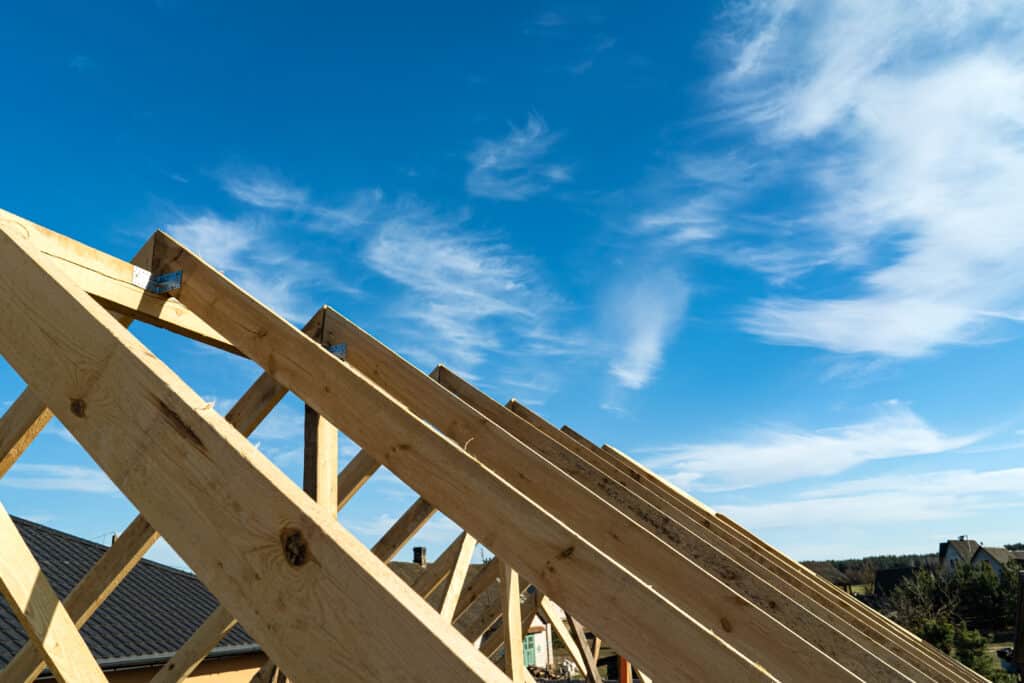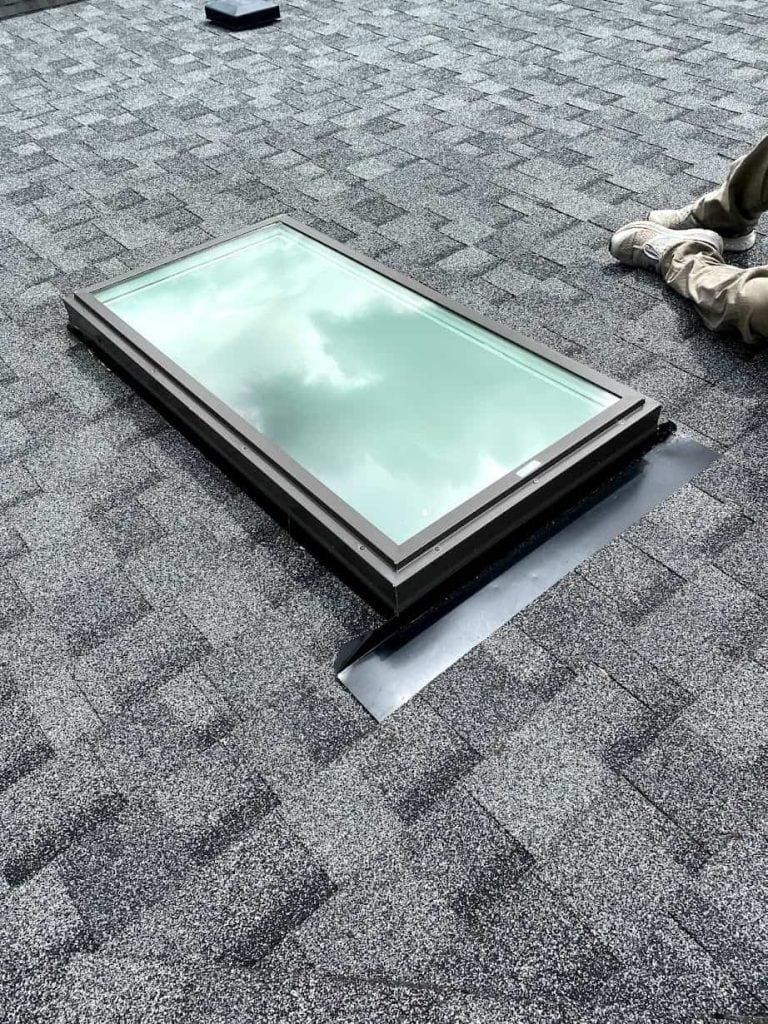>> Read More
Winter days in Calgary are short, brisk, and clear. If you want to soak up as much daylight as possible, a skylight is worth looking into. However, there are many details to consider before you make your decision.

Roofs are increasingly being built using prefabricated truss systems. These roofs have less wiggle room to install skylights, as each piece of lumber is integral to the structure of the roof. It’s unwise and unsafe to cut into a truss roof. While not altogether impossible, it will take a trained roofer to make sure you’re not doing real damage.
A rafter-built roof is easier to work with and offers more flexibility for the installer.
Either way, get an experience roofer up in your attic to inspect and offer alternatives. If you would like to learn more about rafters and trusses, take a look at this article from Fixr.
If you have the budget, glass is preferable to plastic. The main advantage is insulation. Having what is essentially a window on your roof allows for heat and cold to more easily pass through.
All new glass skylights come with multiple layers containing argon gas, which acts as a translucent layer of insulation. They also are coated with a low-emissivity (low-E) coating of metal oxide to offer more protection.
Glass is more expensive and heavier than plastic. However, plastic skylights tend to become discoloured over time and are more prone to nicks and chips from small objects.
To reduce the heat gain of harsh and direct light, many homeowners choose to tint their glass skylights to create a soft and ambient lighting effect. This is typically done in warmer climes like the Southwestern U.S. In Calgary, our winter sun is low in the sky and summer temperatures may not necessitate this step.
Even in Calgary, however, there may be times when you want to block out the midday sun. Skylight shades are a great option for versatility. Using a remote control or simple chord, you can be dim down your gain on hot, sunny days and leave things fully open on grey winter days.
Being able to crank open your skylight on a hot, prairie summer day can bring a fresh breeze through the house. Hot air in the home seeks a place to escape and creates a chimney effect, pulling in cooler air from outside. If you have a stuffy room like a converted attic or second story, venting skylights can be a great choice.
Venting skylights do have their drawbacks. If not properly installed, they can leak more than fixed skylights. Furthermore, fixed skylights are sealed in and insulated better, so they tend to be more energy efficient in the winter.

North-facing skylights are better for giving year-round, soft lighting. It’s tempting to place one on a south-facing wall, but the solar gain and harsh, direct light in the summer can be obnoxious.
Finished attics tend not to have enough windows. They may benefit greatly from large, north-facing, venting skylights that will draw out heat and brighten the space.
Finally, you will want to keep your skylights away from limbs that can tear off in winter storms. Even if they don’t break the tempered glass, they can leave unsightly scratches.
Curb mounted skylights sit on a box structure, typically made from 2×6’s. Once they are installed, it takes very little labour to replace the actual skylight with upgraded versions. Their modular design makes it easy to get custom sizes fabricated.
However, curb-mounts tend to lose insulation value around the box, making it less than ideal for our frigid winters. They are also very noticeable from the street.
Deck mounted skylights are a more recent, energy-efficient design. Their lower profile hugs the roof and is less visible from the street. Velux, and other manufacturers, have made great improvements in integral flashing kits that make installation faster and make for a long-term watertight fit.
Deck mounted are increasingly the choice for all new construction and new skylight installations.
For most living spaces, a standard square or rectangular skylight will be your best choice. But for hallways, pantries, foyers, closets, and other enclosed spaces, a tubular skylight could be just the ticket.
Tubular skylights, also known as sun-tunnels or sun tubes, are budget-friendly and quick to install. They use a small acrylic dome from 10”-22” on the roof to capture sunlight, bounce it down a reflective tube that extends through the roof cavity and ends at a diffuser panel in the ceiling.
This variety can be installed in very narrow spots, and some can be angled for optimal placement in the ceiling.
There are so many ways to mishandle a skylight installation, so it always pays to hire someone with experience in your area. Consider the steps involved in the process:
· Roof shingles will be removed and reinstalled.
· A hole will be cut in the roof’s sheathing.
· Flashing and caulking will need to be placed perfectly to avoid future leaks.
Even a homeowner with experience in repair projects can quickly get in over their head with a skylight installation.
>> Read More
>> Read More
>> Read More
>> Read More
>> Read More
>> Read More
>> Read More